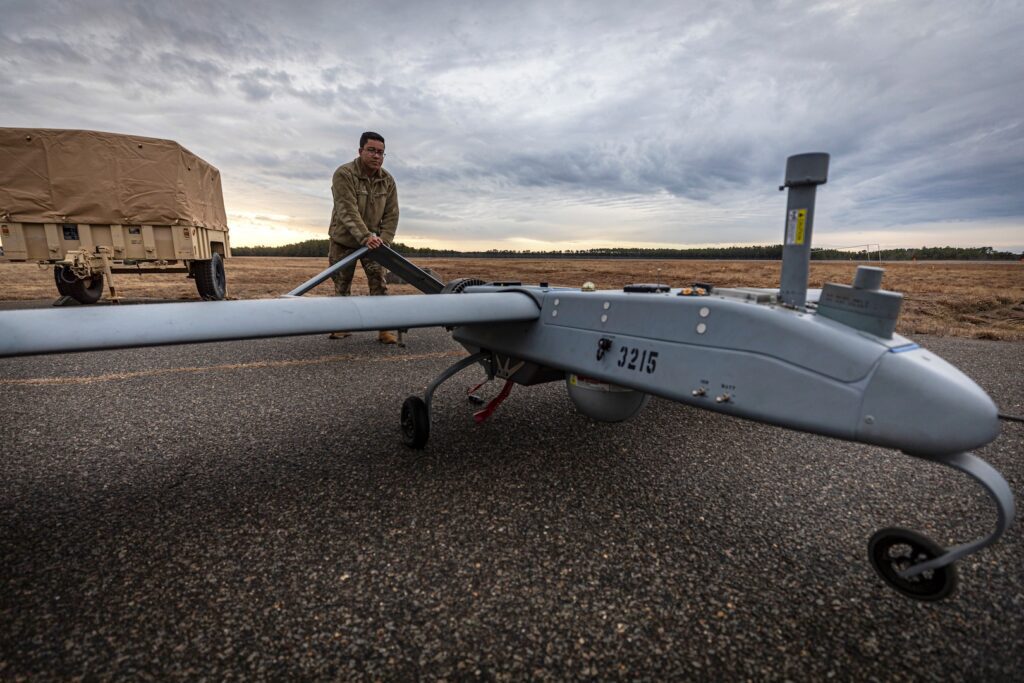Air superiority is a critical factor in modern warfare, allowing one side to gain a significant advantage. This article explores the strategies and tactics employed in achieving air superiority. It begins with a historical perspective, discussing how air superiority has evolved alongside technological advancements. Strategic approaches such as suppression and establishing an airborne surveillance network are explored. Tactical maneuvers, including creating air superiority zones and utilizing stealth technology, are also discussed. Coordinated operations with other military branches, especially ground forces, are emphasized. The role of unmanned aerial vehicles (UAVs) in achieving air superiority is highlighted, as they provide persistent surveillance and strike capabilities. In conclusion, achieving air superiority requires a combination of strategies, tactics, and advanced technologies.
Introduction
Air superiority plays a crucial role in modern warfare, granting a significant advantage to the side that attains it. The ability to control the skies allows for a wide range of strategic and tactical options, ensuring dominance over the enemy’s airspace. This article will explore the modern aerial strategies and tactics employed to achieve air superiority.
A Historical Perspective
Throughout history, air superiority has evolved alongside advancements in technology and military doctrine. In the early days of aviation, aerial combat was limited to dogfights, with pilots engaging in close-range battles. However, with the introduction of radar, guided missiles, and stealth technology, modern aerial warfare has become more sophisticated and complex.
Strategic Approaches
To achieve air superiority, nations employ various strategic approaches. The first and most common is the principle of suppression, wherein enemy air defenses are neutralized or destroyed. This is often achieved through pre-emptive strikes on radar installations, surface-to-air missile sites, and enemy airbases. By diminishing the enemy’s ability to launch aircraft or detect incoming threats, a nation can gain control of the airspace.
Another strategy is to establish a robust airborne surveillance network to gather intelligence on enemy movements and capabilities. This information allows for accurate threat assessment and aids in planning effective countermeasures. Additionally, maintaining a strong fleet of aerial refueling tankers ensures extended endurance for friendly aircraft, further enhancing the ability to project air power.
Tactical Maneuvers
At the tactical level, modern aerial warfare relies on several maneuvers aimed at gaining the upper hand. One such tactic is the establishment of air superiority zones, denied airspace areas for the enemy. By controlling these zones, the defending force can dictate the terms of engagement and protect friendly forces on the ground.
Another tactic commonly employed is the use of stealth technology. Stealth aircraft, such as the F-22 Raptor or the B-2 Spirit, are specifically designed to evade enemy radar and avoid detection. This allows stealth aircraft to conduct surprise attacks and achieve air dominance without being detected until it is too late for the enemy to react.
Moreover, utilizing electronic warfare capabilities can disrupt enemy communications and radar systems, further diminishing their ability to effectively engage friendly aircraft. This tactic cripples the enemy’s command and control chain, leaving them vulnerable and providing a significant advantage to the opposing force.
Coordinated Operations
In addition to strategic approaches and tactical maneuvers, achieving air superiority often requires coordinated operations between different branches of the military. Close coordination with ground-based air defense systems, navy, and ground forces is crucial in maintaining a comprehensive defense against enemy threats.
The integration of air assets with ground forces allows for close air support, where aircraft provide direct support to troops on the ground during combat operations. This collaboration increases overall operational effectiveness and reduces the potential for friendly fire incidents.
The Role of Unmanned Aerial Vehicles (UAVs)
The rise of unmanned aerial vehicles (UAVs) has revolutionized the concept of air superiority. UAVs can operate in high-risk environments without risking human lives, providing persistent surveillance and strike capabilities. Their ability to loiter over an area for extended periods grants them an advantage in gathering vital intelligence, conducting reconnaissance, and engaging enemies with precision-guided munitions.
Furthermore, UAVs can be deployed in swarms, overwhelming enemy air defenses and creating distractions, allowing manned aircraft to penetrate enemy airspace with ease.
Conclusion
Achieving air superiority in modern warfare requires a combination of strategic approaches, tactical maneuvers, and coordinated operations. Nations invest heavily in advanced technologies such as stealth aircraft, electronic warfare capabilities, and unmanned aerial vehicles to gain the upper hand. As technology continues to evolve, the strategies and tactics employed in aerial warfare will continue to evolve as well, ensuring that air superiority remains a crucial component of military dominance.
